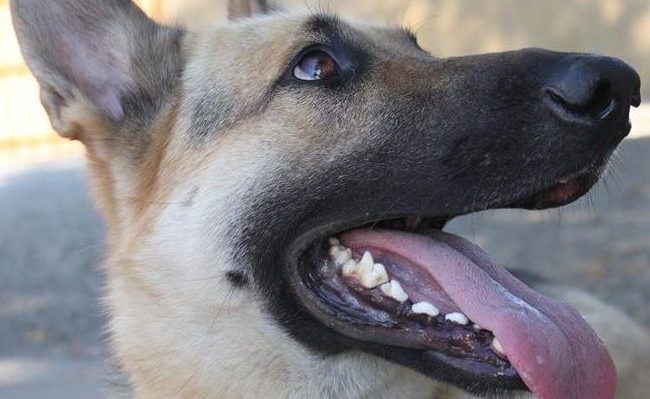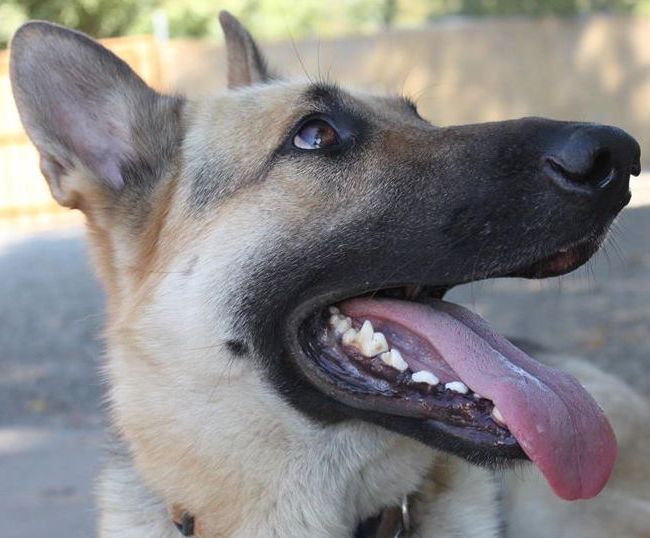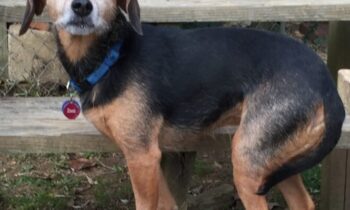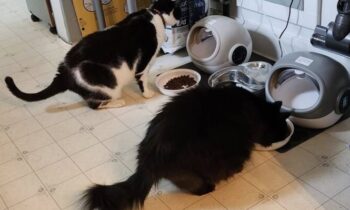


How do humans who work with animals decide that’s what they want to do? For many, working with animals is something they’ve enjoyed since they were kids, and they’ve always wondered if it could ever be a real job. For others who’ve loved animals since childhood but who never imagined an animal-related job in their future, that inspiration can come later in life.
Once you’ve wondered if working with animals might become more than an avocation—once it’s occurred to you that working with animals could be a “real” job—how do you move toward that goal? Who will guide you along the way? Many who now work with animals give their mentors much credit for helping them, through example and advice, to achieve the expertise needed to be a professional.
I asked animal professionals around the world to talk about their mentors.
Marilyn Marks (Connecticut) I had several mentors. The first was a person who was one of Ian Dunbar’s Sirius trainers. I was totally new to dog training and couldn’t believe they were using food to train dogs. She took me under her wing for several years (for free) and, because of her, I became a pet-dog trainer. My second mentor was a clicker trainer before clicker training was a thing. She was a horse person, too, and learned clicker training from Karen Pryor and others on early internet forums. She graciously turned me (for free) from a lure-and-reward trainer to a marker trainer, and we all know what an eye- and heart-opener that was. These two women went on to have great careers helping people and dogs, but nothing famous. The famous person I attribute a lot of my skills to is Sue Sternberg. She brought insights to dog training that are so fundamentally profound and yet so practical—grounded, yet universally meaningful. I would not be half the dog trainer I am if she hadn’t distilled her experience and observations into funny, quippy, hands-on-dogs presentations.
Janet Velenovsky (Virginia) Was I lucky! Dr. R. K. Anderson, epidemiologist and veterinary behaviorist. I met him the first week of my employment with Premier Pet Products and got to tag along with him at North American Veterinary Community conferences. It was amazing. He gently guided me to learn to focus on data and research. He encouraged critical thinking, collegial respect, and curiosity. And he adored both cats and dogs. After spending almost eight years soaking up all the education and training I could through interactions with veterinary behaviorists, trainers, and techs all around the country, I started Kaizen Training & Behavior and have offered private consulting for the last 15 years.
Sally Bradbury (United Kingdom) It was Ian Dunbar who told me I should be charging proper money. I was running a dog-training club. Some of us were in the process of crossing over [to positive training] and we were lucky enough to be asked to provide dogs and people for the filming of “Dogs With Dunbar.” It was a fun time. We did three series in the 1980s. I then went on to found Scallywags School for Dogs in the south of England, one of the first to offer puppy classes and off-lead puppy socialising. I’m now retired, but Scallywags is still going strong under new ownership.
Inna Krasnovsky (New York) Dr. Amy Marder and Dr. Pam Reid. I started at the ASPCA behavior department. Dr. Marder was our department head. Amazing, kind woman who got me interested in behavior modification and training and, on a personal level, was like my second mom—I adore her. When Dr. Marder left, Pam Reid took over. Pam was the most creative trainer and behavior-problem solver and I learned there is almost always a solution to every problem; sometimes you have to think outside the box. Pam also introduced me to clicker training, which I still use with many of my clients. I owe Dr. Marder and Dr. Reid pretty much everything I know. Now I have my own practice, I am a private dog trainer and pet-behavior counselor. I train dogs and modify dog behavior and cat behavior. My work ranges from new puppies to dogs with serious aggression issues to cats that are not getting along with other pets in the home. I also teach several group classes—puppy class, basic manners, and a reactive dog class. All my group classes are clicker-training classes. I am a positive-reinforcement, force-free trainer.
Trish Ryan (New Jersey) Pamela Dennison started the positive-reinforcement ball rolling for me. I was looking for a “kinder” way to train. I attended her classes, a seminar, and a “reactive” camp. I was in awe of how well my dogs responded to me. I threw away the prong collar and never looked back. Pam then referred me to Pat Miller for training academies, and my training career started to “click” (pun intended). I started in North Jersey, 2005-ish; my career was part-time and then put on the back burner for a few years. Now, though, For Paw Drive LLC is full-time helping pups and their humans navigate puppyhood and behavior issues positively.
Lori Leah Monet DVM (Colorado) I think it started with a literary mentor. His real name was James Wight, but his nom-de-plume was James Herriot. I never met him, but I did meet “Tristan.”
Personally, I had many mentors. In high school, Dr. Wampler, the local veterinarian, ran an Explorer group. A dozen girls started; only one became a vet (me). In the Army, I won’t call them mentors, but more friends. And many, many mentors in vet school. I was in the BEST class. And I am proud to say all my veterinarian friends on Facebook are mentors and inspirations still. Also my clinical instructors, many of whom still teach. I left vet school able to walk into a practice and work. We were well trained—the best school there is (between coasts): Colorado State.


Photo by Sarah Richardson
Anna Abney (South Carolina) Debi Davis was one of my first mentors. She sent me my first clicker! Her stories about working with her own dog Peek inspired me. She was as endlessly kind and patient with my fumbling beginner-ness as she is with her dogs. I know her only virtually, but I treasure her always. My first hands-on mentor was Jackie Brown, a breeder of American Staffordshire terriers and Belgian Tervurens. She got me involved in tracking and also really improved my enthusiasm for and with my dog. (I was frustrated that Eve, my chow mix, got more excited when Jackie worked her than when I did. When I expressed this feeling, Jackie teasingly but firmly said, “Well, you’re boring!” I had great treats but I was bland with my praise and lackluster with my affection. Jackie taught me to whoop it up and really be my dog’s cheerleader.)
I teach group pet-training classes for real-life manners and useful obedience. I also teach beginner/puppy conformation and occasionally take private behavior-modification cases. I raise Central Asian shepherd dogs for livestock and personal protection. I have an English shepherd and an American hairless terrier as pets that demo for my classes, and my English shepherd also herds my livestock and is my Bikejoring and Canicross partner.
April Shoe (Alabama) I am blessed to call Abigail Witthauer my mentor and friend. Before I knew her, I admired her from afar, as there weren’t any other accomplished trainers in my state. Then one day we connected and I can’t say how much of an impact she has had on my life in many aspects, but most especially professionally. She helped me understand the need for making continuing education a top priority and she introduced me to the world of service dogs. I am forever grateful to her for helping to build me into the trainer that I am and that I continue to aspire to be. I am the facility manager for her facility, Roverchase, and I work extensively within our service-dog program to oversee our puppy raisers to help produce amazing dogs to assist individuals with disabilities within our foundation. I also operate our day training, group class, and private-lesson client programs.
Leanne Barker (Canada) My school bus driver (kindergarten through grade five) was also the local kennel club trainer. When my mother took me to watch Mom and our shepherd pup go through training in 1979 in the basement of the church, I must have been super excited that I knew the trainer! I think it was likely the first time I recognized someone outside of their “real job,” and this seemed WAY BETTER than being a bus driver! I went home and leash-trained my pet rabbits and pup, and I haven’t stopped since.
First job (stayed for 10 years) at 14 years old working at the local pet shop.
College: Registered Animal Health Tech
Sought formal training in dog training: “Certified Master Trainer.” (Sorry, it’s the only resource I could find in the early ’90s.) While I was at the six-week master training program, the instructor handed out Association of Pet Dog Trainers brochures and literally “warned us” to be aware of these kinds of training programs. On lunch break, I used the pay phone to call and register for the “first” (actually second) APDT conference in Chicago.
The pursuit of an education and mentor for the dog-training profession took me across the continent and into various countries throughout my teens and twenties. My parents were supportive but frustrated that I never followed a traditional career—but I’m successful and happier than anyone I know in their chosen profession.
I have Canadian Canine Training Corp certification. I’m celebrating 30 years as a trainer this year, full-time since 1995. We have 20 acres with a 6,000-square-foot facility in Edmonton, Alberta (Canada). In the last five years, we’ve been active in pilot projects with both Veterans Affairs Canada and the Government of Alberta in research and development for service-dog training in a variety of ways—contributing to implementing protocols for the government to develop “owner-managed” (self-trained) service dogs that are assessed by the government for public access rights (equivalent to ADI assessment standards). We were the first private company (as opposed to not-for-profit association) to qualify for government grant funding to produce, train, and qualify service dogs for individuals.
Separately, pet dog training is always ongoing, open seven days a week, 14-hour days. I have had up to 18 employees at once—five trainers full-time in the past. On a personal pursuit, I was a candidate to write my board certification exams for Behavior in a Vet Tech Specialty, but then my parents both became very ill. I postponed that journey by choice.
How do you find a mentor meant for you? Maria Burton in Spokane volunteered at an animal shelter.
Maria Burton (Washington) My mentor is Dr. Logan Belleque at the Spokane Humane Society! Two years ago, I walked into the SHS Clinic as a volunteer, hoping to learn a little about animal medicine while helping animals at the same time. Dr. Logan took me under her wing, threw me a pair of gloves, and had me assisting with an after-hours emergency my first week there! I immediately fell in love with shelter work and medicine. Her care and love for shelter animals and for animals in our community (and their owners) is inspiring. This last February, I followed her on a wild adventure to Puerto Rico. We were volunteers with ViDAS (Veterinarios Internacionales Dedicados a Animales Sanos, or International Veterinarians Dedicated to Animal Health), a nonprofit organization that helped safely sterilize and vaccinate 4,007 animals in six days! When we came back, I was hired by the Spokane Humane Society Clinic and now I get to work beside Logan every day. It’s a dream come true.
Next week, more about their mentors from animal professionals.



